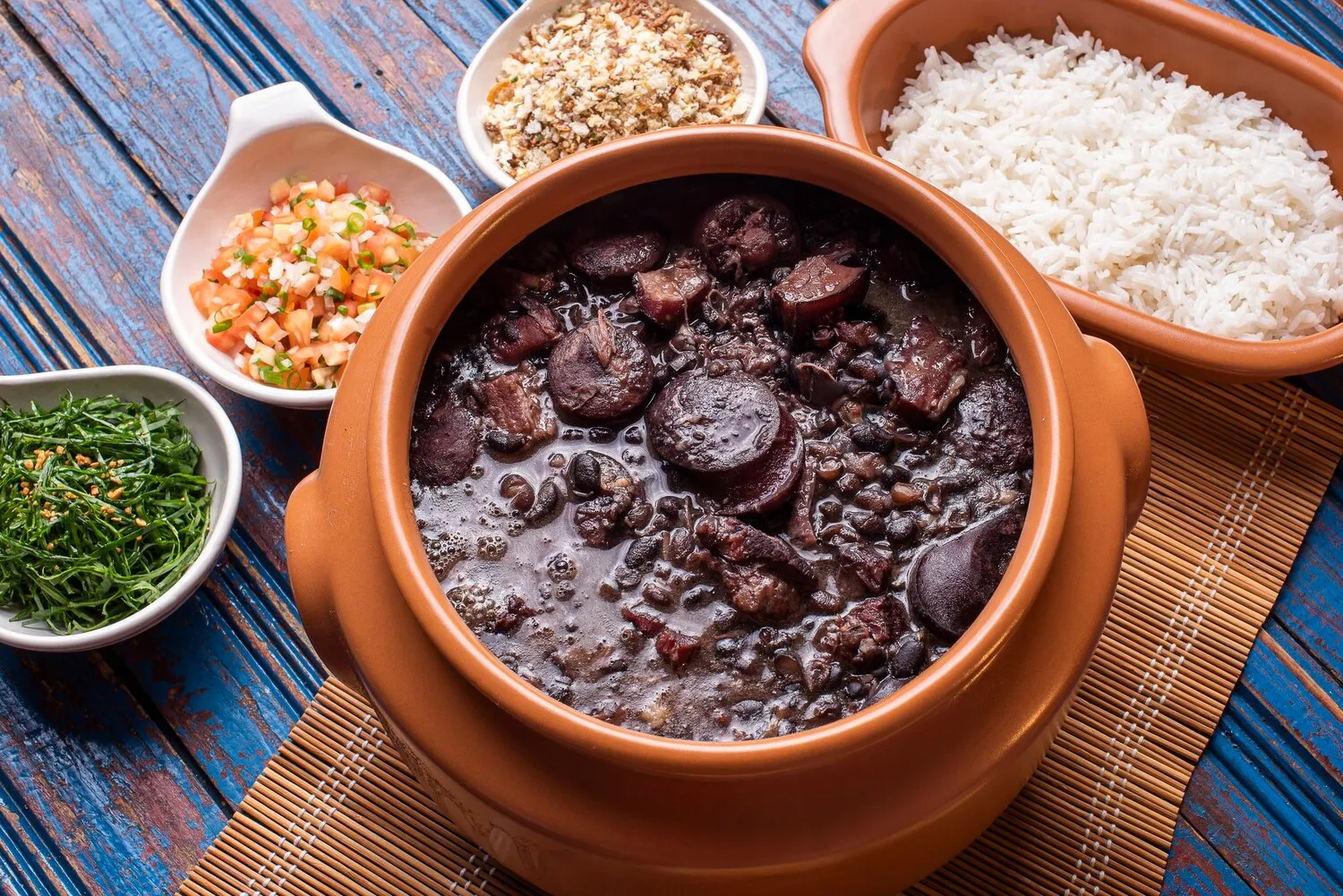
Feijoada
A traditional Brazilian black bean stew with various cuts of pork, beef, and sausage. Served with rice, collard greens, orange slices, farofa (toasted cassava flour), and crackling.
Nutrition Facts
* The % Daily Value (DV) tells you how much a nutrient in a serving of food contributes to a daily diet. 2,000 calories a day is used for general nutrition advice.
Feijoada's origins are debated, with some claiming it originated during slavery as a way for enslaved people to utilize leftover pork parts. Others believe it evolved from Portuguese stews, influenced by indigenous ingredients. Regardless, it became a symbol of national identity over time.
Feijoada is more than just a meal; it's a cultural institution in Brazil, often enjoyed during gatherings and special occasions. It represents Brazilian hospitality and communal dining.
Sunday Lunch Tradition
Feijoada is traditionally eaten on Saturdays or Sundays for lunch, bringing families and friends together for a leisurely meal.
Regional Variations
While the core ingredients remain consistent, regional variations exist, reflecting local culinary traditions. Some regions might include different cuts of meat or add vegetables.
Symbol of National Identity
Feijoada is widely considered Brazil's national dish, representing its diverse culinary heritage and uniting Brazilians across different social classes and regions.
Feijoada is a complex and savory dish, boasting rich, smoky, and hearty flavors.
The black beans provide an earthy base, while the various cuts of pork (such as salted pork, smoked ribs, bacon, and sausage) contribute saltiness, smokiness, and depth. Beef adds further richness. Garlic, bay leaf, and sometimes orange peel infuse aromatic notes. The dish is balanced by the freshness of collard greens, the slight sweetness of orange slices, and the textural contrast of farofa and crackling.
Soaking the Beans
Soak the black beans overnight (or for at least 8 hours) to reduce cooking time and improve digestibility.
Desalting the Pork
Desalt the salted pork by soaking it in water for 24-48 hours, changing the water several times. This removes excess saltiness.
Cooking Time
Feijoada requires slow cooking to allow the flavors to meld and the meat to become tender. Be patient and allow ample time for simmering.
Serving Suggestions
Serve feijoada with rice, collard greens (couve), farofa (toasted cassava flour), orange slices, and crackling (torresmo) for a complete and authentic experience.
Explore additional Traditional dishes and restaurants
Explore TraditionalDiscover top dining spots and culinary experiences in Blumenau.
Explore BlumenauLearn more about the food culture, restaurant scene, and culinary heritage of Brazil.
Explore Brazil